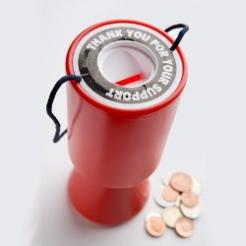A report published by consultancy nfpSynergy suggested that fundraising success for a medical charity was not linked to the number of people with the condition. David Ainsworth asks which factors do have an effect.
This week nfpSynergy, a specialist charity research organisation, published a report which examined 50 health charities, each the top charity for their condition.
The report is called A healthy audience? Does the number of people who have a medical condition or a disability dictate the size of charities that support them?
It found some really interesting stuff. The top line was that there was a limited correlation between the number of people suffering from a condition and the amount of support received by the condition’s connected charities.
Income per sufferer varied enormously, from £13,000 at one end to 2p at the other.
Here’s the top ten charities, with their cause area and income per sufferer:
- Clic Sargent (children’s cancer) £13,275.16
- Teenage Cancer Trust £5,871.18
- Motor Neurone Disease Association £2,543.05
- Cystic Fibrosis Trust £1,158.44
- Anthony Nolan Trust (blood cancer) £1,125.79
- Meningitis Trust £999.05
- Prostate Cancer UK £558.99
- The Brain Tumour Charity £538.86
- National Deaf Children's Society £444.65
- Breakthrough Breast Cancer £359.49
And here’s the bottom ten:
- Mind £2.35
- British Lung Foundation £2.13
- International Glaucoma Association £1.85
- Asthma UK £1.39
- B-eat (eating disorders) £0.70
- British Skin Foundation £0.14
- The Migraine Trust £0.06
- Raynaud's and Scleroderma Association Trust £0.05
- National Back Pain Association £0.03
- Core (irritable bowel syndrome) £0.02
First, a caveat. I’m very doubtful about the top ten figures. In most cases, the report compares the charity's total funding with “the number of people living with the condition in the UK”, but for a handful of charities – most cancer charities and the Meningitis Trust – it uses “the number of people diagnosed with the condition in 2011”.
But diseases usually have more sufferers than diagnoses per year. So the figures for Clic Sargent and the Teenage Cancer Trust need to be divided by at least three to make them comparable with the next on the list, MNDA.
Second, a complaint. The report didn’t offer much explanation as to why different charities were placed where they were, except for saying that cancer charities and children’s charities did pretty well, and that diseases with “emotional power” did better than those without. It didn’t define why some diseases have emotional power, either.
It did observe, quite truthfully, that some charities are probably rubbish at fundraising, while others are probably good, and that this, too, must influence their income.
I don’t think it went far enough, though. It seems to me that their evidence throws up several key trends which explain most of the findings.
Your disease needs to be potentially fatal
The consultancy said it identified “no significant correlation” between mortality rate and income per person. But diseases which can kill you do better than those which can’t. Of the best-performing charities, all but the National Deaf Children’s Society support conditions which are potentially fatal.
But I’m not sure that a 100 per cent fatality rate is going to be good for a charity. After all, who are your best fundraisers? Surely your former sufferers.
I would guess, on a thumb-in-the-air basis, that a mortality rate of about 40 per cent is ideal for fundraising (although certainly not for the poor buggers with the condition). It’s enough to really scare people, but still leaves plenty of survivors to run marathons for you.
It helps if your disease does something really unpleasant
Does your disease strike without warning out of a clear sky? Does it leave the sufferer nastily crippled? Is it hideously painful and disfiguring? Or does it just interfere with your day in an irritating but non-threatening way? If you can say yes to the first three questions, go straight to the front of the fundraising queue. If you say yes to the last one, go straight to the back.
At one end of the scale are MND, meningitis and deaf-blindness, which I wouldn’t wish on anyone. At the other end of the scale we have back pain.
Slightly higher up the rankings is asthma, which I can speak about from personal experience. I’ve had asthma my whole life – I still have it today – and even I can’t get excited about fundraising for Asthma UK. Sorry, folks.
The age of your sufferers is crucial
NfpSynergy identified that kids’ charities do the best. People feel a special protectiveness towards children, and that makes fundraising easy, they said.
But the trend goes further. If you look at the conditions at the other end of the scale, there is a tendency for them to be afflictions of the old. Of the bottom 20 conditions on nfpSynergy’s list, more than half are associated with or exclusively suffered by people in old age: hearing loss, back pain, irritable bowels, arthritis, diabetes, heart problems.
It may be callous, but you won’t have much luck rattling a tin at me, asking me to donate to help people who got ill because they got old. It’s not much of a hard luck story.
Okay, so what now?
Does this tell us anything useful? Well, I think if you give each of these conditions a mark out of ten for these three factors, and multiply them together, it explains your fundraising potential quite closely. It certainly works quite well with these 50 charities.
In short, I think there is a fairly fixed ranking system for how easy it is to fundraise for a charity, but it’s not based on sufferers, and it doesn’t correlate exactly with mortality rates. And I’m not sure how much you can do, as a fundraiser, to improve your charity’s standing.
In short, the appeal of your cause is the cause of the success of your appeal.









